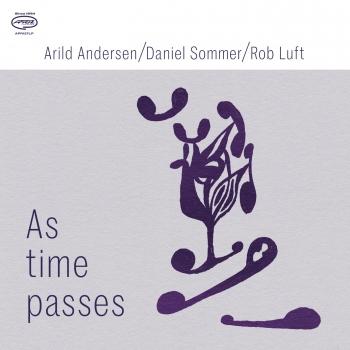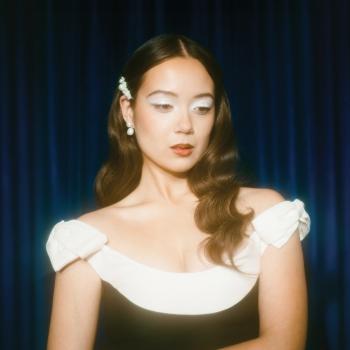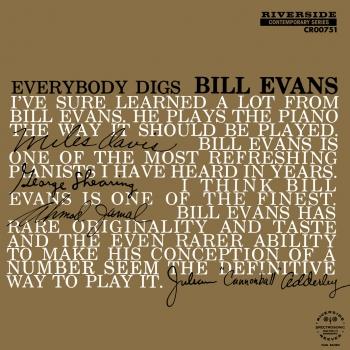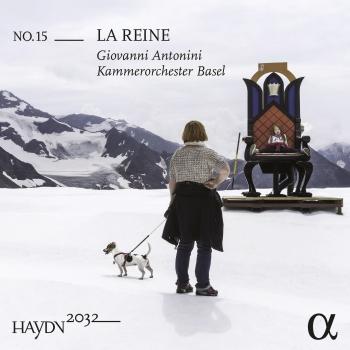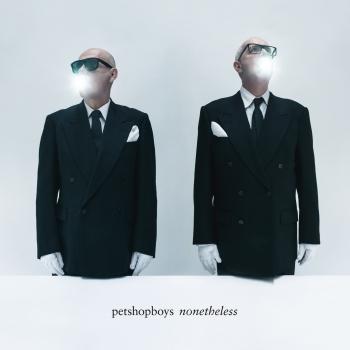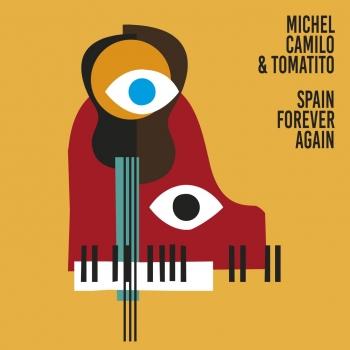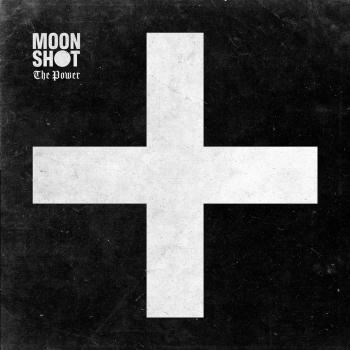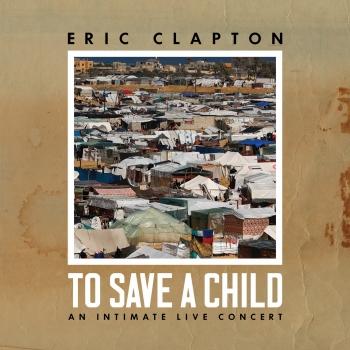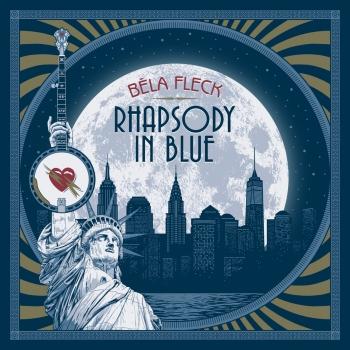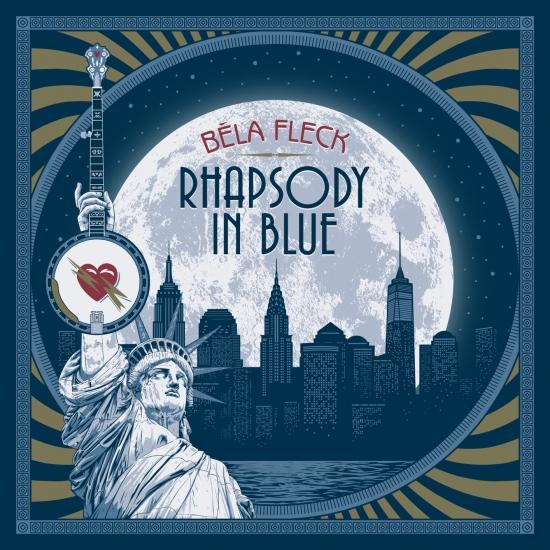
Rhapsody in Blue Béla Fleck
Album Info
Album Veröffentlichung:
2024
HRA-Veröffentlichung:
12.02.2024
Das Album enthält Albumcover
- Ferde Grofé (1892 - 1972), George Gershwin (1898 - 1937), Béla Fleck (b. 1958): Rhapsody in Blue(grass)
- 1Grofé, Gershwin, Fleck: Rhapsody in Blue(grass)12:10
- George Gershwin, Béla Fleck: Unidentified Piece for Banjo:
- 2Gershwin, Fleck: Unidentified Piece for Banjo03:19
- Ferde Grofé, George Gershwin: Rhapsody in Blue (feat. Eric Jacobsen & Virginia Symphony Orchestra):
- 3Grofé, Gershwin: Rhapsody in Blue (feat. Eric Jacobsen & Virginia Symphony Orchestra)18:50
- Ferde Grofé, George Gershwin, Béla Fleck: Rhapsody in Blue(s):
- 4Grofé, Gershwin, Fleck: Rhapsody in Blue(s)05:08
- Will Donaldson (1891 - 1954), George Gershwin, Béla Fleck: Rialto Ripples:
- 5Donaldson, Gershwin, Fleck: Rialto Ripples04:08
Info zu Rhapsody in Blue
Béla Flecks Interpretation von George Gershwins Rhapsody in Blue.
Das neueste Projekt des großen Banjospielers Béla Fleck erweitert und erforscht George Gershwins Rhapsody in Blue, indem es eine Hommage an den legendären Komponisten darstellt und gleichzeitig einen amerikanischen Klassiker neu definiert – gerade rechtzeitig zum hundertjährigen Jubiläum. Erhältlich ab 12. Februar, hundert Jahre nach dem Tag, an dem Gershwin das Werk in der Aeolian Hall in New York City uraufgeführt hat, enthält Flecks Rhapsody in Blue-Album drei Variationen: „Rhapsody in Blue(grass)“, „Rhapsody in Blue(s)“ und die klassische Orchestrierung, jedoch mit Banjo anstelle des Klaviers, gespielt vom Virginia Symphony Orchestra unter der Leitung von Eric Jacobson. Das Set enthält auch Gershwins „Rialto Ripples“ und „Unidentified Piece for Banjo“, ein bisher unveröffentlichtes Stück, das in der Library of Congress entdeckt wurde.
Hier gibt es die Ersteinspielung von Gershwins „Unidentified Piece for Banjo“, das Fleck von seinem Freund Dr. Ryan Banagale, dem Autor von Arranging Gershwin, zugespielt wurde: „Es ist sehr ähnlich wie ein Ragtime-Musikstück durch die Gershwin-Linse, mit einer sehr eingängigen Melodie und einigen überraschenden harmonischen Bewegungen am Ende der Phrasen“, sagt Fleck. „Er hat die Harmonie nicht aufgeschrieben, aber die Implikationen schienen eindeutig auf ‚I Got Rhythm‘-Akkorde hinzuweisen, wenn auch ein wenig schräger. Um die Authentizität des Stücks zu erhalten, habe ich es auf einem alten, fünfsaitigen Banjo gespielt.“
Geboren und aufgewachsen in New York City, ist dieses Projekt ein Höhepunkt von Flecks lebenslanger Liebe zu Gershwin und seinen Kompositionen. „Ein Klavierspieler kann die Rhapsody viel schneller spielen als ich“, fügt Fleck hinzu. „Aber die Wahrheit ist, dass sie sie schon so oft gespielt haben, dass sie manchmal überhastet gespielt wird. Ich hörte zu und dachte: ‚Da ist so viel drin, aber es geht so schnell vorbei, dass ich nicht alles mitbekomme. Das hat mir gezeigt, wie ich diese Teile auf dem Banjo neu interpretieren kann. Es könnte eine neue Erfahrung für die Zuhörer sein, anstatt sie zum fünfundzwanzigsten Mal auf dem Klavier zu hören. Es könnte sogar eine Offenbarung sein.
In den letzten vier Jahrzehnten ist Béla Fleck immer wieder dorthin gegangen, wo noch kein Banjospieler zuvor gewesen ist – und hat dabei 16 Grammys in neun verschiedenen Kategorien gewonnen, darunter Country, Pop, Jazz, Instrumentalmusik, Klassik und Weltmusik. Als er sich dem Ende seiner Rhapsody-Neuarrangements näherte, begann Fleck sich zu fragen, ob er seine Gershwin-Hommage noch weiter ausbauen könnte, vielleicht indem er das gesamte Orchester durch Bluegrass-Instrumente ersetzt.
„Mein erster Gedanke war: „Rhapsody in Blue(grass)“ ist die schrecklichste Idee, die ich mir je vorstellen konnte“, gibt er zu. „Aber als wir anfingen, es zu erforschen, merkte ich, dass es eigentlich ganz gut klang. Mit der Bluegrass-Version hatten wir die Möglichkeit, uns zu strecken, etwas Spaß zu haben und ein paar andere kreative Züge zu machen.“ Ihm zur Seite steht die Kernband seiner mit einem Grammy ausgezeichneten My Bluegrass Heart Band: Michael Cleveland, Sierra Hull, Justin Moses, Mark Schatz und Bryan Sutton. Bei „Rhapsody in Blue(s)“ – der Blues-Version – sind die langjährigen Béla-Kollegen Sam Bush, Jerry Douglas und Victor Wooten zu hören.
Fleck fügte eine Solo-Banjo-Version von Gershwins „Rialto Ripples“ hinzu, einer Ragtime-Neuheit, die bei ihrer Uraufführung 1916 zunächst floppte. Fleck nimmt das weniger bekannte Werk mit Anmut und unvergleichlicher Präzision wieder auf.
„Ich wünsche mir, dass es George Gershwin gefallen hätte, dass er gedacht hätte: ‚Hmmm, das ist nicht das, was ich erwartet habe, aber die Musiker haben sicherlich etwas anderes dazu beigetragen.'“
Béla Fleck, Banjo
My Bluegrass Heart:
Michael Cleveland, Geige
Sierra Hull, Mandoline
Justin Moses, Gitarre, Dobro, Banjo
Bryan Sutton, Gitarre
Mark Schatz, Bass
Virginia Symphony Orchestra
Eric Jacobsen, Dirigent
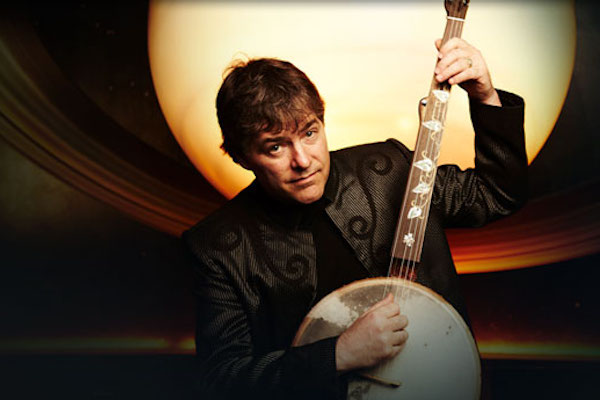 Béla Fleck
Béla Fleck
Just in case you aren’t familiar with Bela Fleck,
there are some who say he’s the world’s premier banjo player. Others claim that Béla has virtually reinvented the image and the sound of the banjo through a remarkable performing and recording career that has taken him all over the musical map and on a range of solo projects and collaborations. If you are familiar with Béla, you know that he just loves to play the banjo, and put it into unique settings.
Béla was born on July 10,1958 and raised in New York City. While watching The Beverly Hillbillies as a young boy, the bluegrass sounds of Flatt & Scruggs flowed out of the TV set and into his young brain. Earl Scruggs’s banjo style hooked Béla’s interest immediately. “It was like sparks going off in my head,” he later said.
The banjo didn’t become a full time passion until ’73, when his grandfather coincidentally bought him one. That week, Béla entered New York City’s, High School of Music and Art. He began studies on the French horn but was soon demoted to the chorus, due to his lack of musical aptitude. Since the banjo wasn’t an offered elective at Music and Art, Béla sought lessons through outside sources: Erik Darling, Marc Horowitz, and Tony Trischka stepped up and filled the job.
During this period, Béla played in his first bands: Brownstone Holler and Wicker’s Creek. Living in NYC, Béla was exposed to a wide variety of musical experiences. One of the most impressive was a concert by Return to Forever, featuring Chick Corea and Stanley Clarke. This concert encouraged further experimenting with rock and jazz on the banjo, signs of things to come.In 1976, he started his professional career, playing with Boston-based Tasty Licks.
In 1979, he moved to the bluegrass heartland, Lexington, KY, where he co-founded Spectrum with Jimmy Gaudreau, Glen Lawson, and Mark Schatz.
In 1981, Béla was invited to join the progressive bluegrass band New Grass Revival, lead by Sam Bush on mandolin, fiddle and vocals. With the addition of Pat Flynn on guitar and NGR veteran John Cowan on bass and vocals, New Grass Revival took bluegrass music to new heights, exciting audiences and critics alike. Through the course of five albums, they charted new territory with their blend of bluegrass, rock and country music. The relentless national and international touring by NGR exposed Béla’s banjo playing to the bluegrass/acoustic music world.
During the eight and a half years Béla spent with NGR, he continued to record a series of solo albums for Rounder, including the ground breaking 1988 album Drive. He also collaborated with Sam Bush, Jerry Douglas, Edgar Meyer and Mark O’Connor in an acoustic super-group called Strength in Numbers. Their MCA release, The Telluride Session is considered an evolutionary statement by the acoustic music community.
Now living in Nashville, TN, he found himself invited to record on albums by Garth Brooks, Dolly Parton, Randy Travis, The Oak Ridge Boys, The Gatlin Brothers, and many others.
In 1988, for the PBS Lonesome Pine Series, Béla put several musical soundstogether with his banjo, a string quartet, his Macintosh computer and an experimental, jazz-based combo. Howard Levy and Victor Lemonte Wooten signed on for the concert, but the group still lacked a drummer. The search was on for an unusual drummer/percussionist. Victor suggested his brother Roy Wooten, later to become known as FutureMan. Roy was developing the “Drumitar” (drum / guitar), then in its infancy. A MIDI trigger device, the Drumitar allowed FutureMan to play the drums with his fingers triggering various sampled sounds. The first rehearsal was hampered by a strong thunderstorm that knocked the electricity out for hours. The four continued on with an acoustic rehearsal and the last slot on the TV show became the first performance of Béla Fleck and the Flecktones.
Next came the self-titled CD, which Béla financed himself. The recordingattracted the attention of the folks at Warner Bros. Records. Dubbed a “blu-bop” mix of jazz and bluegrass, the Grammy-nominated album became a commercial and critical success.
The Flecktones’ second recording Flight of the Cosmic Hippo followed suit and hit #1 on the Billboard Jazz Chart.
Howard Levy toured and recorded with the Flecktones till the end of 1992. After several years as a trio and touring with special guests, saxophonist Jeff Coffin joined the ‘Tones. Famed for a non-stop touring schedule, from 2001 onward, the Flecktones performed for more than 500,000 people per year.
(In 1996, Béla revisited the forward-leaning bluegrass sound of Drive, to record Bluegrass Sessions. He added Earl Scruggs, Vassar Clements and John Hartford to the original Drive lineup of Tony Rice, Sam Bush, Jerry Douglas, Stuart Duncan, and Mark Schatz).
Still releasing albums and touring, the Flecktones have garnered a strong and faithful following among jazz and new acoustic fans. They have shared the stage with the Dave Mathews Band, Sting, Bonnie Raitt and the Grateful Dead, among many others, made several appearances on The Tonight Show, both the Johnny Carson and the Jay Leno days, as well as Arsenio Hall, and Conan O’Brian. Béla also appeared on Saturday Night Live and The Late Show with David Letterman. The Flecktones went on tour with Dave Matthews Band in 1996 and 1997, and Fleck is featured on several tracks on DMB’s 1998 album Before These Crowded Streets.
In 2003, Béla Fleck and the Flecktones simultaneously released the landmark three-disc Little Worlds with a highlights disc entitled Ten From LittleWorlds.
In 2006 the band released The Hidden Land, which won the Grammy for BestContemporary Jazz Album in 2007. In 2008, the band’s holiday album Jingle All The Way was released, and took home the Grammy for Best Pop Instrumental Album in 2009.
Béla went to Africa in 2006 to film and record Throw Down Your Heart, a sprawling project that included an award-winning documentary and two Grammy winning albums, Throw Down Your Heart, Tales from the Acoustic Planet Vol. 3 (2010), and Throw Down Your Heart – The Africa Sessions, Vol. 2 (2011). Both earned Grammys for Best Contemporary World Music Album.
The journey explored the African roots of the banjo and featured collaborations with incredible African musicians. It led to extensive tours in North America and Europe with Oumou Sangare, Toumani Diabate, Bassekou Kouyate and N’Goni Ba, among many others.
Any world-class musician born with the names Béla (for Bartok), Anton (for Weburn) and Léos (for Janacek) would seem destined to play classical music.
Already a powerfully creative force in bluegrass, jazz, pop, rock and world music, Béla made the classical connection with Perpetual Motion, his critically acclaimed 2001 Sony Classical recording that went on to win a pair of Grammys, including Best Classical Crossover Album, in the 44th annual Grammy Awards.
Collaborating and co-producing Perpetual Motion was his longtime friend andcolleague, Edgar Meyer, an acclaimed composer and bassist whose virtuosity defies labels. Béla and Edgar co-wrote and performed a double concerto for banjo and bass, which they debuted with the Nashville Symphony Orchestra in 2003. They also co-wrote The Melody of Rhythm with world renowned tabla virtuoso Zakir Hussain, a triple concerto for banjo, bass and tabla. They recorded it with the Detroit Symphony Orchestra, and played trio and concerto shows around the world.
2008 found Bela recording The Enchantment, a duet record with his hero, Chick Corea. This album won a Latin Grammy and has led to a fruitful ongoing duo tour, and recently a double live album, Two (2015).
In 2011, through a commission with the Nashville Symphony Orchestra, Béla wrote and premiered his first stand-alone banjo concerto, The Impostor, accompanied by the documentary film, How to Write a Banjo Concerto. This work, along with his new quintet for banjo and string quartet, Night Flight Over Water, was released on the prestigious Deutche Gramophone label. Dedicated to Earl Scruggs, who attended the Nashville premiere, Fleck has performed the concerto worldwide over 40 times. In 2016, Fleck premiered The Juno Concerto with the Canton Symphony Orchestra, with a third banjo concerto planned for 2018.
In 2013, he joined forces with his wife, clawhammer banjoist and singer Abigail Washburn for a very banjo-centric recording and touring project. The impetus was the birth of their son Juno. Along with the obvious musical chemistry, this family band would keep their family together – on tour. Their debut album Béla Fleck and Abigail Washburn took home the 2016 Grammy for Best Folk album.
In recent years he’s found himself bouncing between various intriguing touring situations, such as duos with Chick Corea, Chris Thile and Abigail Washburn, in a trio with Zakir Hussain and Edgar Meyer, performing his concertos with symphonies, concerts with the Brooklyn Rider string quartet, performances with African artists such as Oumou Sangare and Toumani Diabate, in jazz collaboration with The Marcus Roberts Trio, rare solo concerts and doing bluegrass with his old friends. And after nearly 30 years, the Flecktones are still performing together.
The recipient of multiple Grammy Awards and nominations going back to 1998, Béla Flecks’ total Grammy count is 15 Grammys won, with 30 nominations. He has been nominated in more categories than any instrumentalist in Grammy history.
Dieses Album enthält kein Booklet

